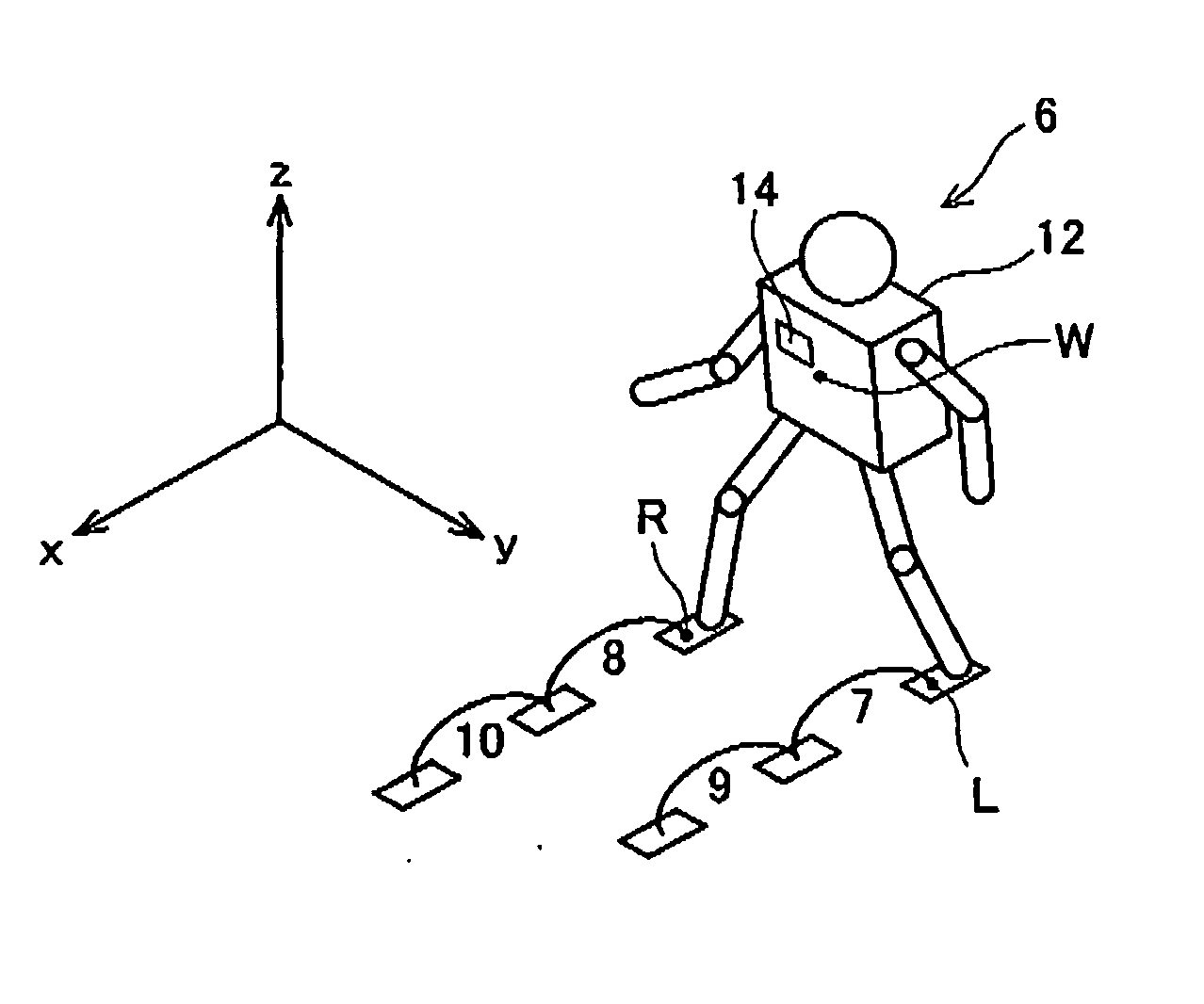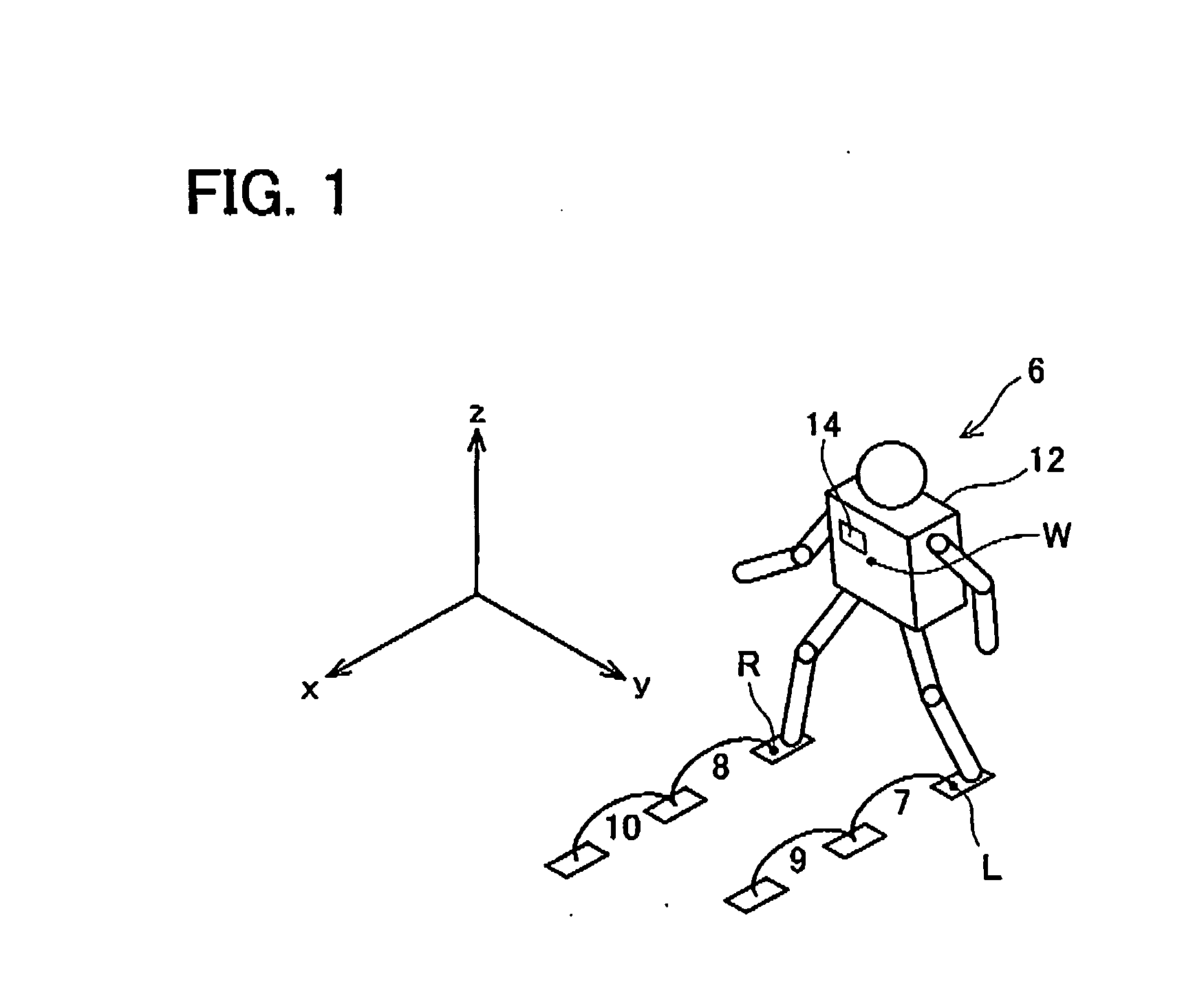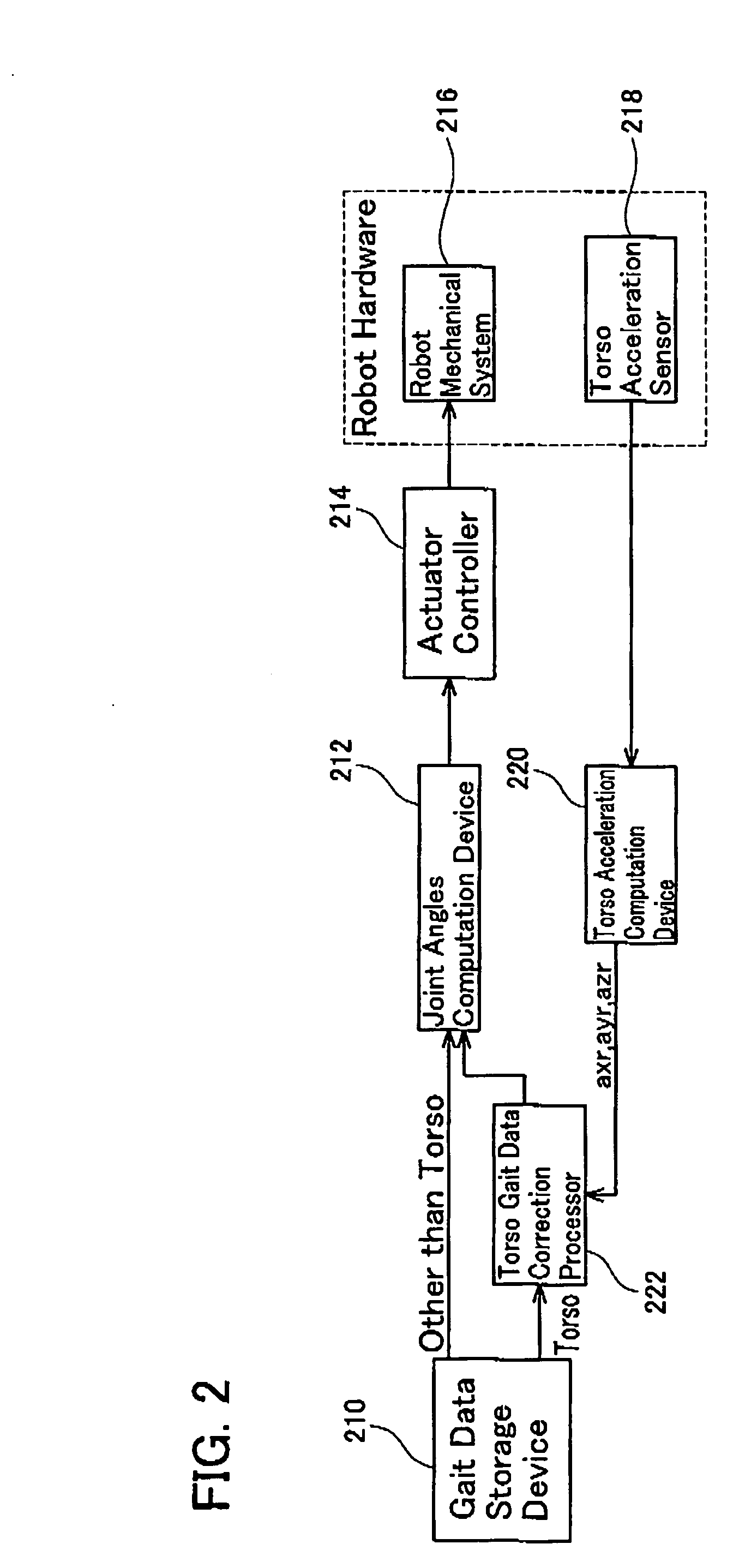Legged Robot and Legged Robot Walking Control Method
- Summary
- Abstract
- Description
- Claims
- Application Information
AI Technical Summary
Benefits of technology
Problems solved by technology
Method used
Image
Examples
first embodiment
[0046] The robot 6 shown in FIG. 1 moves the left leg as the floating leg along a trajectory 7 while the right leg is planted on the ground, and then, when the left leg is planted on the ground, moves the right leg as the floating leg along a trajectory 8, and similarly thereafter continues walling by moving the left leg as the floating leg along a trajectory 9, and subsequently moving the right leg as the floating leg along a trajectory 10.
[0047] In order for the robot 6 to continue walking, gait data is required, which is constituted from leg tip trajectory data describing the trajectories 7, 8, 9, 10 of the leg tip reference points L, R, hand trajectory data, and torso trajectory data describing the trajectory of a reference point W on the torso 12. Leg tip trajectory data is specified by an operator. Hand trajectory data is computed corresponding to the leg tip trajectory data. Torso trajectory data is set to a relationship in which a ZMP trajectory computed using a robot dynam...
second embodiment
[0105] A robot may be equipped with a device for detecting the torso position. For example, if a gyroscope is mounted on the robot, it is possible to detect not only the actual torso acceleration, but also the actual torso position. Mounting a GPS measurement sensor also makes it possible to detect the actual torso position. Torso velocity can be determined by integrating torso acceleration, and further integration will also make it possible to detect torso position.
[0106] When the robot can detect its actual torso position, a feedback control loop can be put to practical use. When the feedback control loop is utilized, it becomes possible to cope with a situation in which the robot is tilted in its entirety because the robot is walking over rough terrain. An explanation of the second embodiment will be given below, but only those points that differ from the first embodiment will be explained.
[0107]FIG. 9 shows a block diagram of the functionality of a computer of the robot of the...
PUM
 Login to View More
Login to View More Abstract
Description
Claims
Application Information
 Login to View More
Login to View More - R&D
- Intellectual Property
- Life Sciences
- Materials
- Tech Scout
- Unparalleled Data Quality
- Higher Quality Content
- 60% Fewer Hallucinations
Browse by: Latest US Patents, China's latest patents, Technical Efficacy Thesaurus, Application Domain, Technology Topic, Popular Technical Reports.
© 2025 PatSnap. All rights reserved.Legal|Privacy policy|Modern Slavery Act Transparency Statement|Sitemap|About US| Contact US: help@patsnap.com



